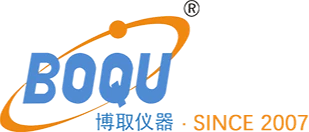Expert in Water Quality Measurement and Water Treatment Project Since 2007
The Differences Between Real-Time and Batch Water Quality Sensing
Real-Time vs. Batch Water Quality Sensing: What's the Difference?
If you're trying to determine the best method for monitoring water quality, you may face a choice between real-time and batch sampling. These two approaches have their own unique benefits and drawbacks, which may influence your decision. Here's an overview of the differences between real-time and batch water quality sensing, along with practical applications for each method.
1. Real-Time Water Quality Sensing: Basics and Advantages
Real-time water quality sensing involves continuously monitoring various parameters in water, such as pH, dissolved oxygen, temperature, and conductivity, using sensors that can transmit data in real-time to a remote location. This method allows for rapid detection of changes in water quality, which can be critical for preventing or mitigating pollution events, optimizing treatment processes, and ensuring compliance with regulatory requirements. In addition, real-time sensors can provide detailed information on the spatial and temporal variability of water quality, which can enhance our understanding of aquatic ecosystems and their responses to natural and human-induced stressors.
2. Real-Time Water Quality Sensing: Challenges and Limitations
Despite its advantages, real-time water quality sensing also poses some challenges and limitations. One of the main issues is sensor accuracy and reliability, which can vary depending on the type of sensor, the calibration frequency, the environmental conditions, and other factors. In addition, real-time sensors may require frequent maintenance and calibration, which can be time-consuming and costly. Moreover, real-time monitoring may generate large amounts of data that require advanced processing and visualization tools to extract meaningful information.
3. Batch Water Quality Sensing: Basics and Advantages
Batch water quality sensing, also called discrete sampling, involves collecting water samples at discrete intervals, usually manually or with automatic samplers, and analyzing them in the laboratory for various parameters. This method allows for precise and quantitative measurements of water quality, using standardized methods and equipment. In addition, batch sampling can provide representative samples of different water sources or locations, which can be compared over time or across space. Batch sampling is also less prone to interferences from other substances in the water, such as organic matter, turbidity, or salinity, which may affect sensor readings in real-time monitoring.
4. Batch Water Quality Sensing: Challenges and Limitations
However, batch water quality sensing also has some disadvantages and limitations. One of the main limitations is the time lag between sampling and analysis, which can range from hours to days, depending on the availability of laboratory facilities, personnel, and resources. During this time, water quality may change due to various factors, which may affect the accuracy and representativeness of the samples. Moreover, batch sampling may not capture the full spatial and temporal variability of water quality, which may require more frequent and widespread sampling efforts.
5. Choosing the Right Method for Your Needs
So, how do you choose the right method for your water quality monitoring needs? The answer depends on various factors, such as the scope and scale of your monitoring program, the parameters of interest, the level of accuracy and precision required, the frequency and duration of monitoring, the availability of resources, and the regulatory requirements. In general, real-time monitoring is more suitable for detecting and responding to sudden changes in water quality, such as spills, storms, or algal blooms, while batch sampling is more appropriate for systematic and comparative studies of water quality trends and patterns, such as long-term monitoring or source characterization.
In conclusion, both real-time and batch water quality sensing have their own benefits and drawbacks, and the choice between them should depend on the specific needs and goals of your monitoring program. Whether you use one or both methods, it's important to ensure that your data collection and analysis procedures are standardized, consistent, and reliable, and that they provide meaningful and actionable information for improving water quality and protecting aquatic resources.
Contact Us
Office Add:No. 118 Xiuyan Road,Pudong New Area,Shanghai,Zip Code:201315,China
Contact us right away
BOQU Instrument focus on development and production of water quality analyzers and sensors, including water quality meter, dissolved oxygen meter, pH sensors, etc.
